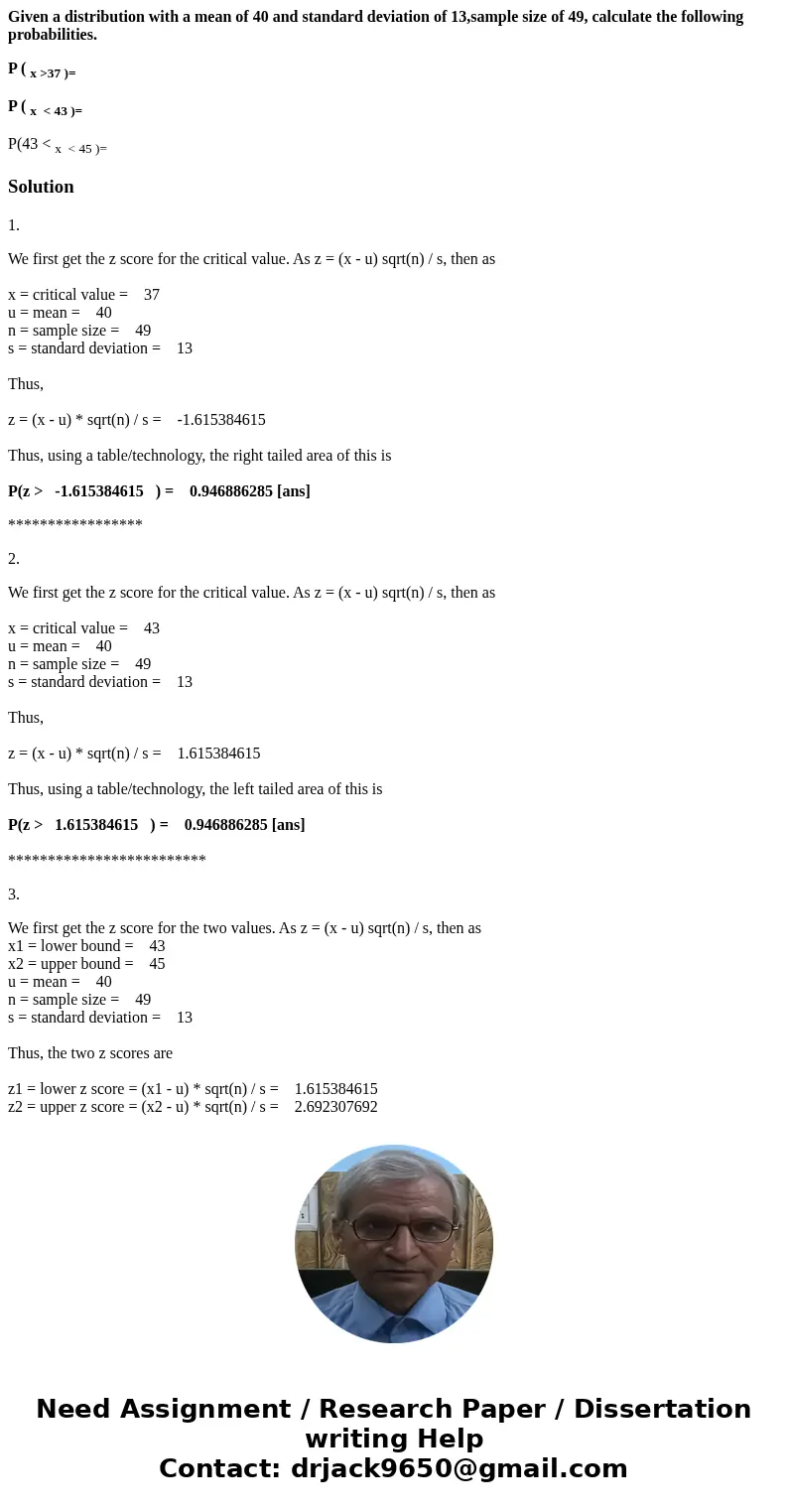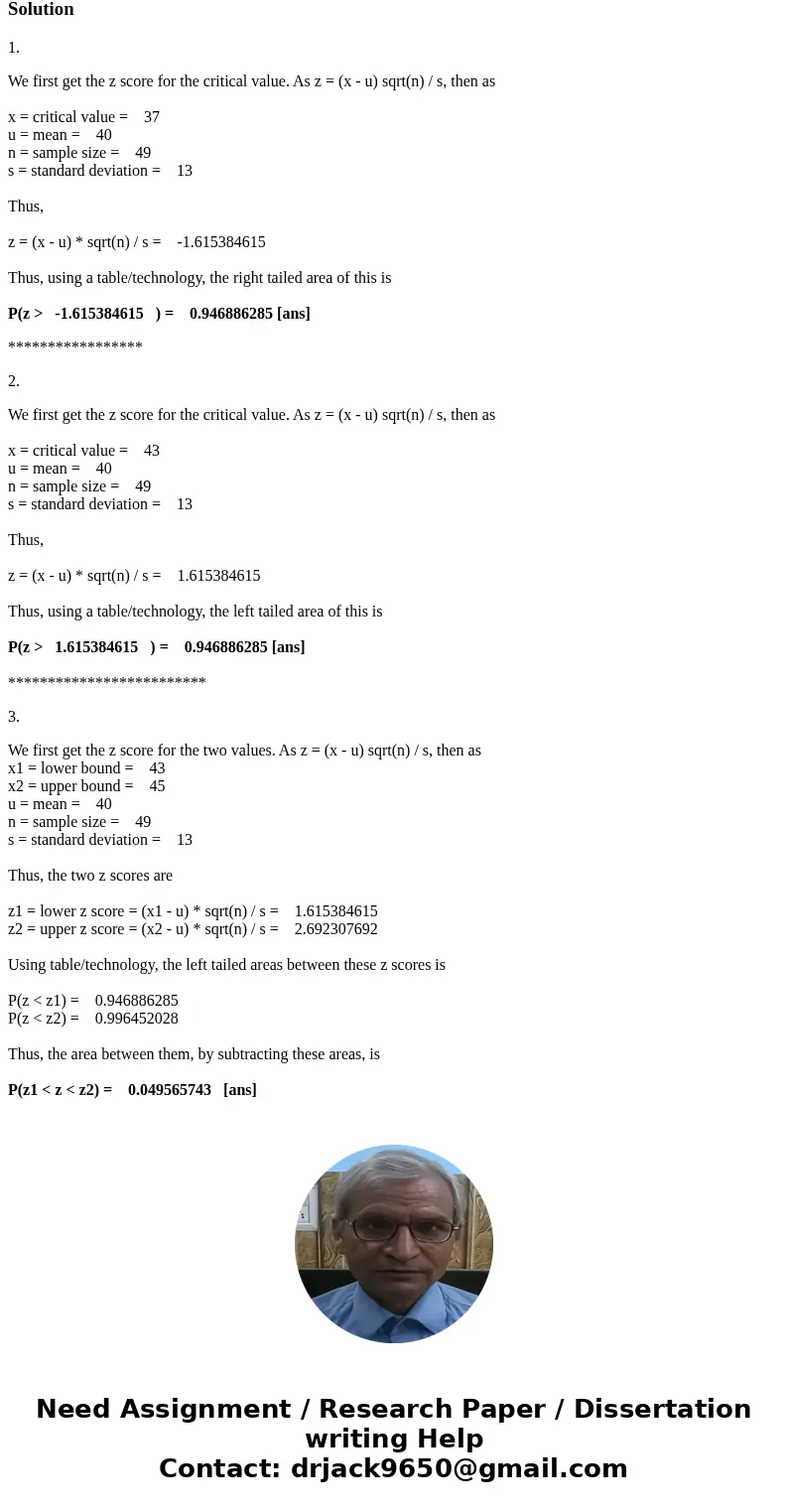Given a distribution with a mean of 40 and standard deviatio
Given a distribution with a mean of 40 and standard deviation of 13,sample size of 49, calculate the following probabilities.
P ( x >37 )=
P ( x < 43 )=
P(43 < x < 45 )=
Solution
1.
We first get the z score for the critical value. As z = (x - u) sqrt(n) / s, then as
x = critical value = 37
u = mean = 40
n = sample size = 49
s = standard deviation = 13
Thus,
z = (x - u) * sqrt(n) / s = -1.615384615
Thus, using a table/technology, the right tailed area of this is
P(z > -1.615384615 ) = 0.946886285 [ans]
*****************
2.
We first get the z score for the critical value. As z = (x - u) sqrt(n) / s, then as
x = critical value = 43
u = mean = 40
n = sample size = 49
s = standard deviation = 13
Thus,
z = (x - u) * sqrt(n) / s = 1.615384615
Thus, using a table/technology, the left tailed area of this is
P(z > 1.615384615 ) = 0.946886285 [ans]
*************************
3.
We first get the z score for the two values. As z = (x - u) sqrt(n) / s, then as
x1 = lower bound = 43
x2 = upper bound = 45
u = mean = 40
n = sample size = 49
s = standard deviation = 13
Thus, the two z scores are
z1 = lower z score = (x1 - u) * sqrt(n) / s = 1.615384615
z2 = upper z score = (x2 - u) * sqrt(n) / s = 2.692307692
Using table/technology, the left tailed areas between these z scores is
P(z < z1) = 0.946886285
P(z < z2) = 0.996452028
Thus, the area between them, by subtracting these areas, is
P(z1 < z < z2) = 0.049565743 [ans]


 Homework Sourse
Homework Sourse